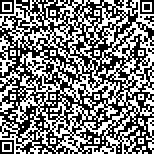王明,杨玲,黄新,等.重复经颅磁刺激联合康复训练治疗腰椎间盘突出症的疗效观察[J].中华物理医学与康复杂志,2023,45(3):243-247
扫码阅读全文

|
| 重复经颅磁刺激联合康复训练治疗腰椎间盘突出症的疗效观察 |
|
| |
| DOI:10.3760/cma.j.issn.0254-1424.2023.03.011 |
| 中文关键词: 重复经颅磁刺激 康复训练 腰椎间盘突出症 |
| 英文关键词: Transcranial magnetic stimulation Rehabilitation training Lumbar disc herniation |
| 基金项目: |
|
| 摘要点击次数: 4280 |
| 全文下载次数: 4613 |
| 中文摘要: |
| 目的 观察重复经颅磁刺激(rTMS)联合康复训练治疗腰椎间盘突出症(LDH)的疗效。 方法 选取LDH患者72例,按照随机数字表法将其分为rTMS组、训练组、联合组,每组24例。rTMS组给予2 Hz rTMS治疗,训练组给予康复训练(麦肯基力学疗法和腰背部核心肌群稳定性训练),联合组给予康复训练和rTMS治疗,每日治疗1次,每周6次,连续8周。治疗前、治疗8周后(治疗后)、治疗结束后8周(随访时),采用视觉模拟评分法(VAS)、Oswestry功能障碍指数(ODI)对3组患者的疼痛和功能障碍程度进行评定。治疗后,采用改良的Macnab标准评估治疗效果。所有患者均随访12个月,记录复发情况。 结果 治疗前,3组患者VAS、ODI评分比较,差异无统计学意义(P>0.05)。治疗后,3组患者的疼痛和功能障碍均有所缓解(P<0.05)。与rTMS组比较,训练组治疗后和随访时的VAS评分较高、ODI评分较低。联合组治疗后和随访时的VAS、ODI评分均较rTMS组和训练组低(P<0.05)。治疗后,rTMS组、训练组、联合组的总有效率分别为62.5%、95.83%、100.00%,训练组和联合组的总有效率显著高于rTMS组(P<0.05)。随访发现,rTMS组、训练组、联合组的复发率分别为37.50%、25.00%、8.33%,联合组的复发率显著低于rTMS组和训练组(P<0.05)。 结论 rTMS联合康复训练可以减轻LDH患者的疼痛症状,提高腰椎功能,降低复发率。 |
| 英文摘要: |
| Objective To observe any effect of supplementing conventional rehabilitation training with repeated transcranial magnetic stimulation (rTMS) in the treatment of lumbar disc herniation (LDH). Methods Seventy-two LDH patients were randomly divided into an rTMS group (n=24), a training group (n=24), and a combined group (n=24). The rTMS group received 2Hz rTMS at an intensity of 80% resting motor threshold with a total of 1000 pulses, the training group was given Mackenzie therapy and lumbar core muscle stability training, while the combined group was provided with both. Each group was treated once a day, 6 times a week for 8 weeks. The participants rated their pain using a visual analog scale (VAS), and the Oswestry dysfunction index (ODI) was also used to evaluate the degree of pain and dysfunction in all three groups before and right after the treatment, as well as 8 weeks later. After the treatment, its therapeutic effect was evaluated using the improved Macnab standard. Each patient was followed up for 12 months and any recurrence was recorded. Results Before treatment there was no significant difference in average VAS ratings or ODI scores among the three groups. Afterward, pain and dysfunction were relieved significantly in all three groups. Compared with the rTMS group, the average VAS rating in the training group was significantly higher and the average ODI score was significantly lower after the treatment and during the follow-up. Moreover, the average VAS rating and ODI score of the combined group were significantly lower than those in the other two groups after the treatment and during follow-up. The total effectiveness rate in the rTMS group was assessed as 62.5% compared with 95.8% in the training group and 100% in the combined group-a significant difference for the rTMS group. Follow-up showed that the recurrence rates of the rTMS group, training group and combined group were 37.5%, 25% and 8.3%, respectively-a significant difference in the case of the combined group. Conclusion rTMS combined with rehabilitation training can relieve pain, improve lumbar function and reduce the recurrence of LDH. |
|
查看全文
查看/发表评论 下载PDF阅读器 |
| 关闭 |
|
|
|